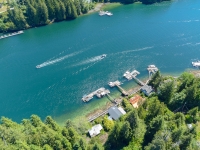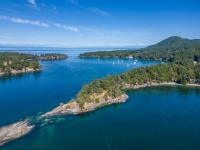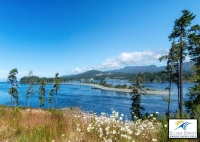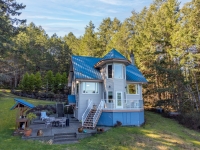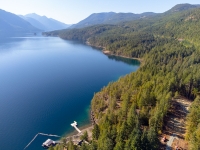Erosion Prevention
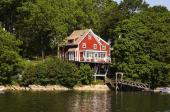 The shoreline, where water meets land, is where your waterfront property is most susceptible to erosive forces. Erosion is a natural process that causes a gradual wearing away of land surfaces by water, ice and wind. Erosion can cause slumping, surface runoff, silt deposits, and if left unchecked, major property and building damage. Protect your shoreline by understanding the value of the buffer zone. Alterations to your natural shoreline i.e. removal of rocks, trees, and other live and fallen vegetation, puts your buffer area at risk of becoming an erosion zone. Being aware of erosion risks and taking appropriate action will better arm you to safeguard your property, and protect your pocketbook.
The shoreline, where water meets land, is where your waterfront property is most susceptible to erosive forces. Erosion is a natural process that causes a gradual wearing away of land surfaces by water, ice and wind. Erosion can cause slumping, surface runoff, silt deposits, and if left unchecked, major property and building damage. Protect your shoreline by understanding the value of the buffer zone. Alterations to your natural shoreline i.e. removal of rocks, trees, and other live and fallen vegetation, puts your buffer area at risk of becoming an erosion zone. Being aware of erosion risks and taking appropriate action will better arm you to safeguard your property, and protect your pocketbook.
Vegetation, logs and rocks along the shoreline also slow down floodwaters, reducing damage to your property. In addition, these shoreline plants increase the soils ability to absorb water, which reduces the negative impact of flooding.
What is a buffer strip/zone and why is it important?
Deep-rooted vegetation such as tall grasses, shrubs, and trees, and aquatic vegetation such as reeds or cattails (freshwater) and eelgrass (saltwater), help buffer the shoreline. By reducing the energy of waves and currents, the buffer zone protects your shoreline from erosion.
Vegetation covering your property, including in the buffer zone, provides protection from erosion damage caused by surface drainage. Because shoreline properties are on the receiving end of uphill drainage, this is a common problem; the more cover, the better for you.
If properly established and maintained, a buffer zone can:
* Remove up to 50 percent or more of fertilizer chemicals and pesticides.
* Remove up to 60 percent or more of some bacteria
* Remove up to 75 percent or more of sediment (soil particles)
For further information and environmental advice for waterfront owners, please visit www.bcnature.ca/projects/completed-projects/living-by-water Copyright Sarah Kipp, Living by Water Project
Reprinted with Permission Oct 2005.


